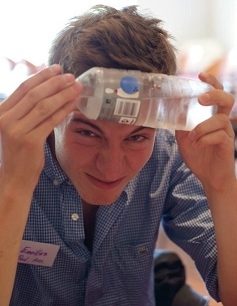Introduction
Once upon a time, the idea of a dedicated card for rendering 3D graphics was frowned upon by the experts. But despite this, the little company 3dfx launched exactly that in 1996. The card was known by the name Voodoo, and it was to become the start of an era which will not be forgotten by the nerds of that generation. The 3D graphics card had come to stay, and 3dfx would deliver them.
For several years (which as you know is a very long time in the computer world) 3dfx was solidly leading the market with their Voodoo card, but in the primo 1998 they started losing their lead. This was about the same time they released the Voodoo 2 and began the Rampage project. The Voodoo 2 was a worthy and very popular successor to the Voodoo card, but it would pale compared to the outcome of the Rampage project. That project was planned to take 2 years, and it was meant to result in a graphics card which would be many years ahead of the competition. In the mean time the Voodoo 3 was developed, and 3dfx bought STB, a large graphics card manufacturer at that time, in order to produce their own cards for the OEM market. However, sales were below expectations and at the same time they lost quite a lot of consumer sales due to the change of focus. To make matters worse nVidia had become a serious competitor, and when they launched their first Geforce graphics card the fate of 3dfx was sealed. The Geforce was a card which truly offloaded the CPU and which could render 2D graphics - the Voodoo 4 cards were never able to match that, and the Voodoo 5's didn't sell enough to save the company.
When nVidia bought 3dfx in late 2000 the company and an era ended.
The Rampage project? It was finished in December 2000, a few weeks before 3dfx was bought by nVidia, but the result never entered the market. Rumor has it that the Spectre card, which it was named, is kept in a glass case somewhere in the nVidia head quarter.
Whether it did get as technologically advanced as 3dfx had promised is unfortunately not publicly known, but I think it is likely that nVidia has used some things from it in the Geforce series.

What does that have to do with today's test subject? With the introduction of the Voodoo in 1996 3dfx an almost unique and innovative product got on to the market. The result was an improvement of the gaming experience to all new heights. This is exactly what AGEIAT is attempting to do with PhysX, to increase the gaming experience to all new heights by providing a level of realism never seen before.
This is, however, not the only thing AGEIAT has in common with 3dfx, according to rumors several of the people behind AGEIAT are the very same people which were behind 3dfx, which can only be a good thing.

One of the manufacturers helping AGEIAT realizing their goal is BFG, a company we have met before in various graphics card tests. BFG (which by the way does not stand for anything than just that, BFG ;) ) is still a new brand in Denmark, but they have shown that they're aiming for the picky gamer and they're not afraid of going their own way, by way of e.g. bundles and a life time warranty.
Before we take a closer look at the card we will look at the technology behind it - what PhysX is really about.





